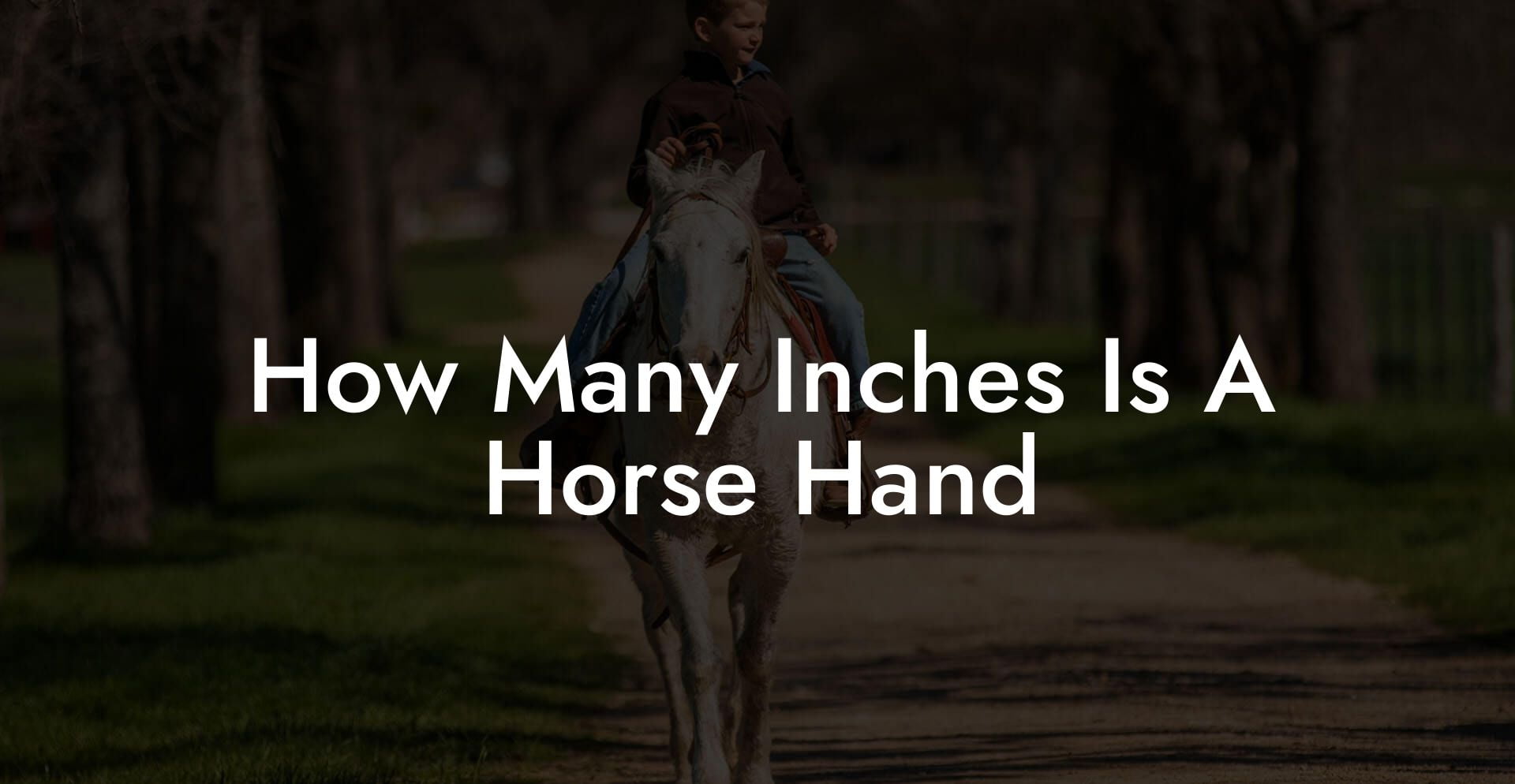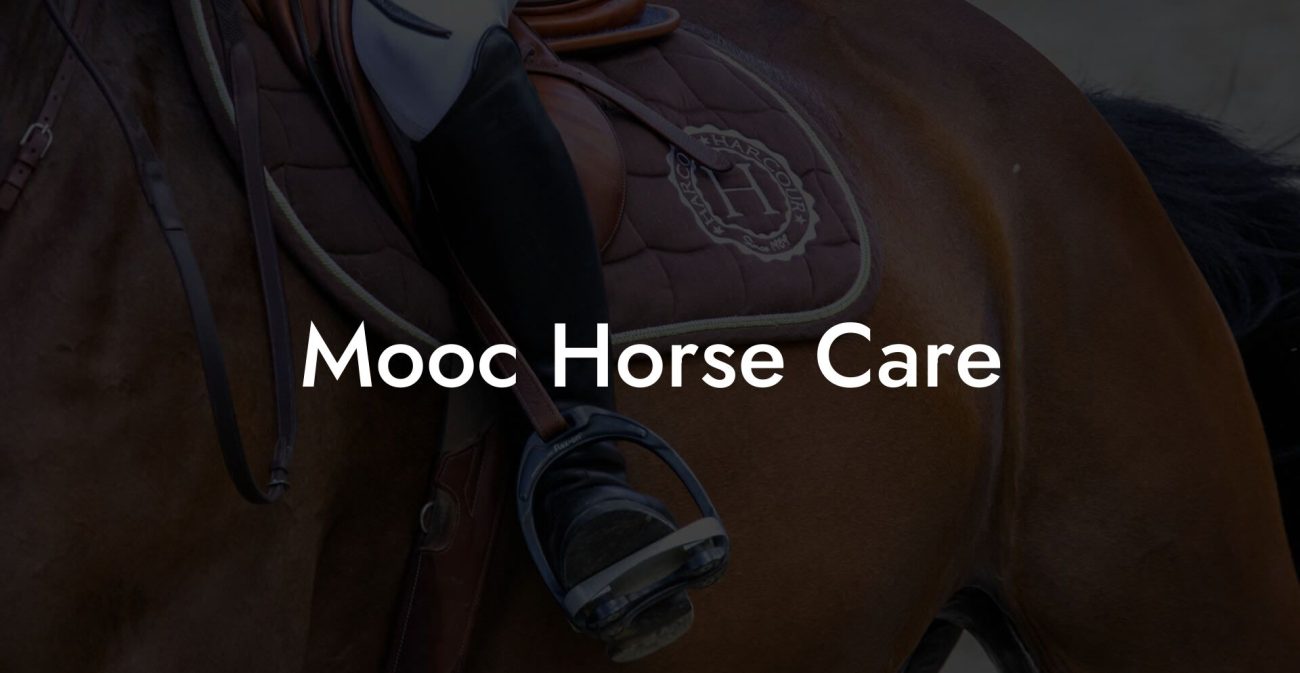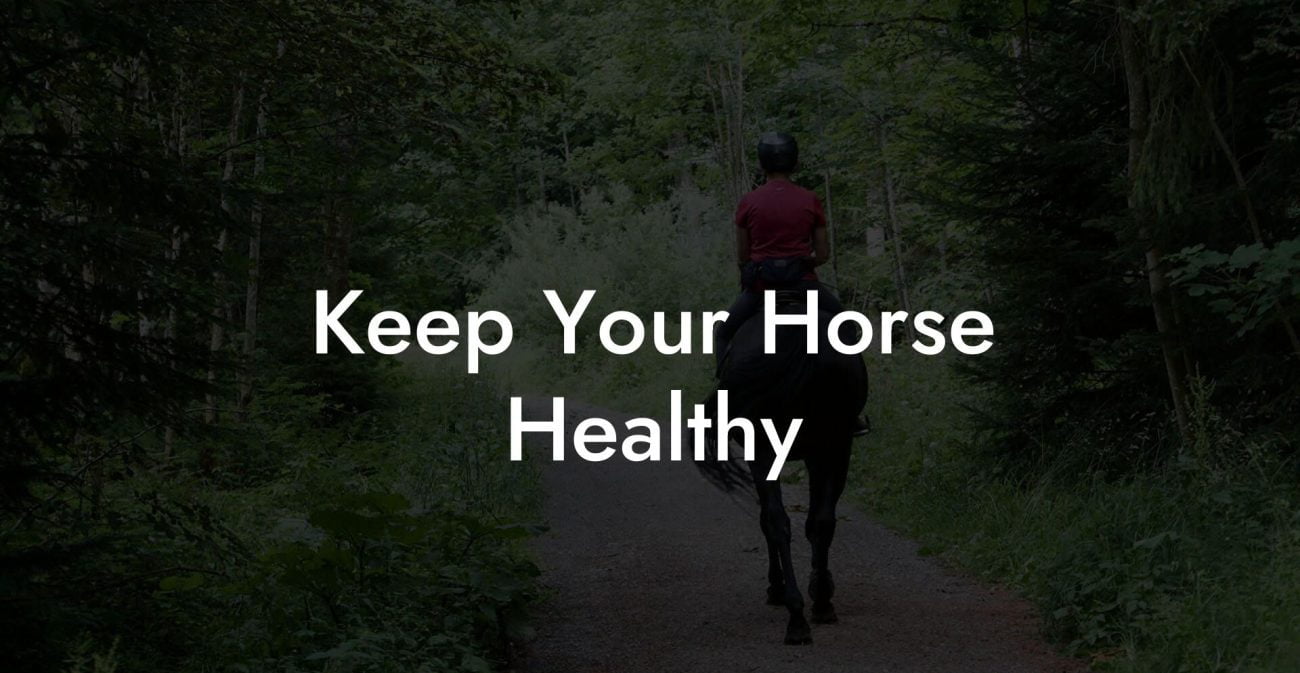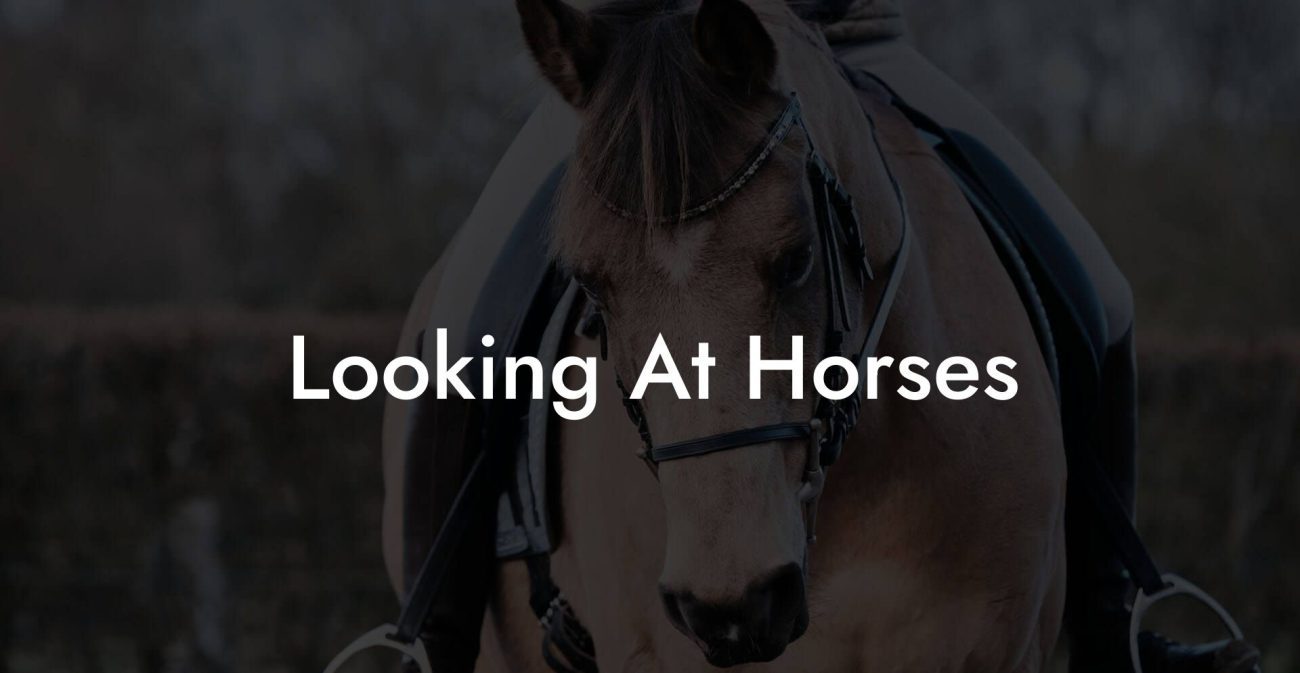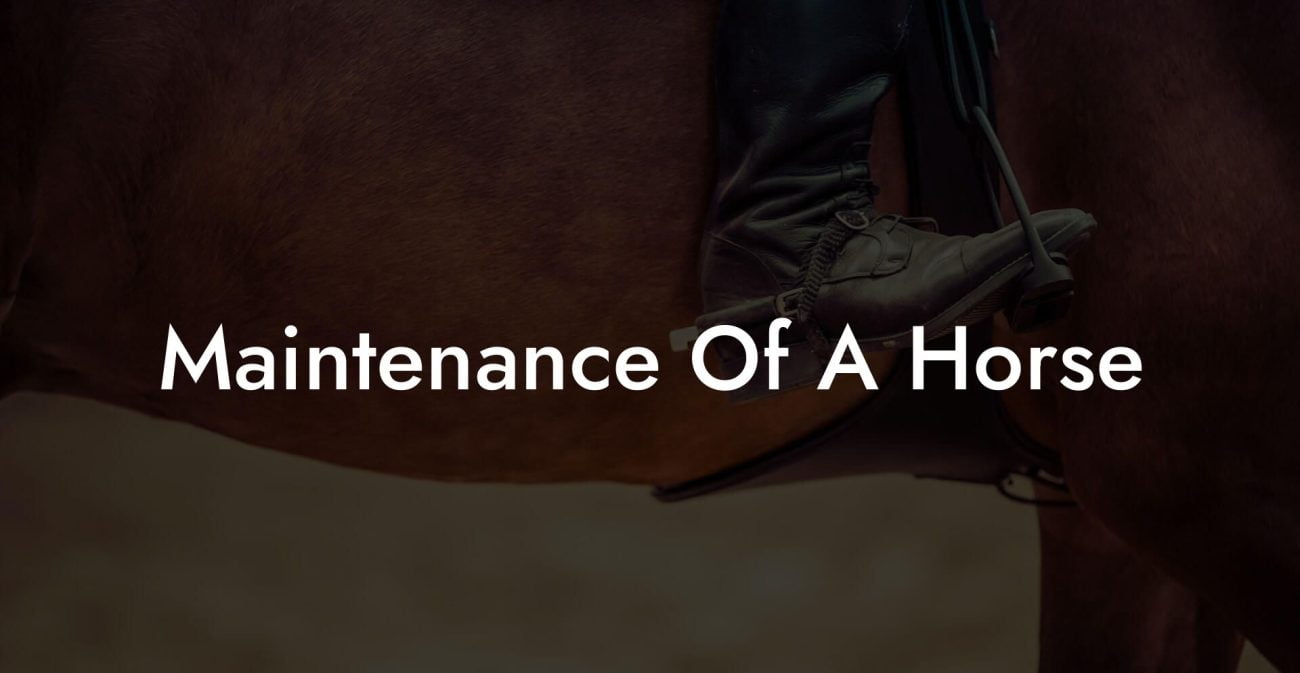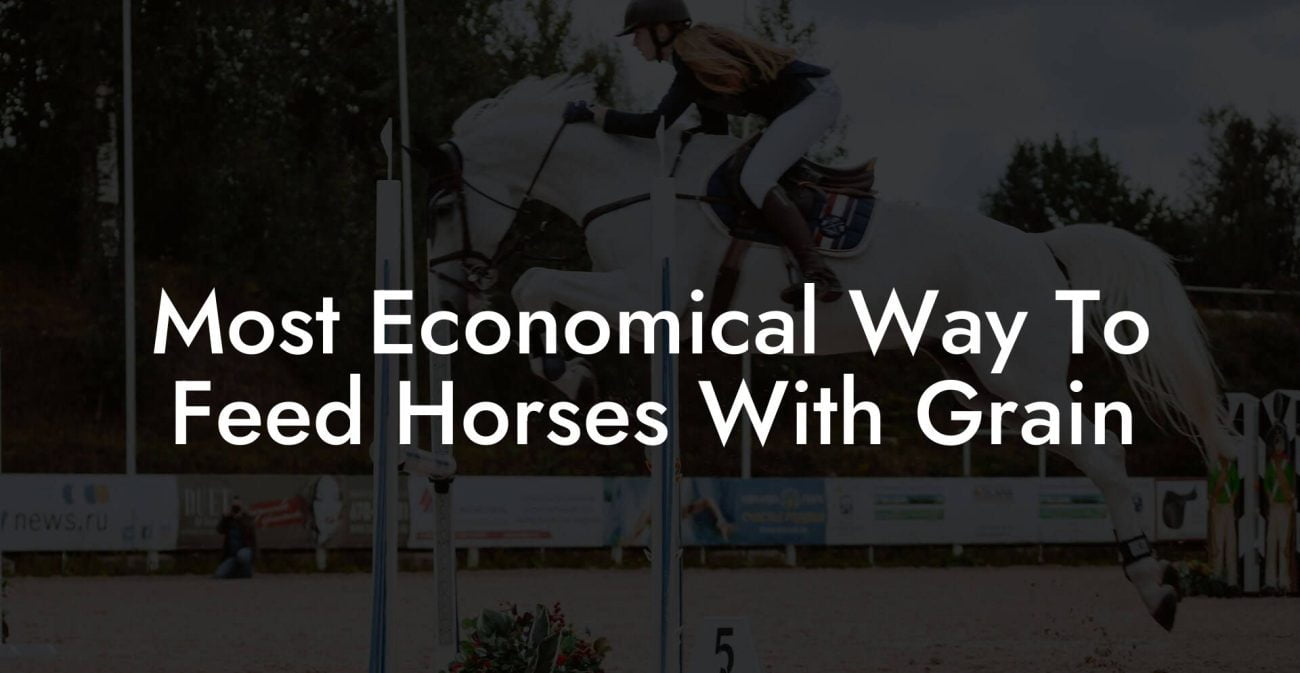There’s something undeniably cool about knowing exactly how tall your equine friend stands, and if you've ever found yourself wondering, “How many inches is a horse hand?” you’re not alone. Whether you’re a seasoned horse owner or a curious Gen-Z or millennial dreaming about your future career as a horse whisperer, understanding this quaint unit of measurement is surprisingly essential. Let’s unpack everything from the history behind the "hand" to why it matters when you're caring for these majestic creatures, and yes, we’ll make a few horse puns along the way.
Quick Links to Useful Sections
- The Origin and Definition of a Horse Hand
- The Mathematics Behind a Horse Hand
- Why Knowing the Right Measurement Matters in horse care
- Horse Measurement in Practice: Tools and Techniques
- Understanding Horse Height: What Do the Numbers Tell Us?
- Converting Hands to Inches and Vice Versa: A Handy Guide
- How Horse Hands Influence breeding and Sales
- Technical Benefits: How Digital Tools Are Changing Horse Measurement
- Practical Tips for Measuring Your Horse at Home
- Tip 1: Choose the Right Spot
- Tip 2: Use a Reliable Measuring Tape
- Tip 3: Know the Landmarks
- Tip 4: Record and Compare
- Maintaining Optimal Health Through the Right Measurement
- Exploring the History and Evolution of Horse Measurements
- How Horse Measurements Affect Equipment and Riding Apparel
- Integrative and Holistic Approaches To Equine Wellbeing
- Resources and Community Support: Your Next Steps
- Equine Health and Lifestyle: More Than Just a Measurement
- Case Studies: Real-Life Examples of Measurement Impact
- Case Study 1: The Racing Legend Reborn
- Case Study 2: A Holistic Approach to Competitive Dressage
- Case Study 3: Breeding for the Future
- Integrative Equine Wellness Plan: Charting Your Course Forward
- Step 1: Conduct a Thorough Assessment
- Step 2: Define Clear Goals
- Step 3: Incorporate Multiple Modalities
- Step 4: Schedule Routine Check-Ups and Measurements
- Step 5: Engage with the Equine Community
- FAQ: Your Top Questions About Horse Hands Answered
- Your Journey to Equine Mastery Starts With a Single Hand
The Origin and Definition of a Horse Hand
Once upon a time (and by that, we mean a few centuries ago), horse measurement was as much an art as it was a necessity. The "hand" became the go-to unit because it was practical, readily available, and quite literally, hands-on. Today, a horse hand is defined as exactly 4 inches. That means if you ever need to measure your horse, you won’t have to frantically search for a yardstick, your hand (or a measuring tape marked in hands) has got you covered.
This unit of measurement has endured through the ages, bridging ancient practices with modern techniques. It was originally based on the width of a human hand, though modern measurements ensure consistency across the board. As quirky as it sounds, a single "hand" now represents a precise 4-inch increment, making horse height measurement both scientific and a nod to tradition.
In the equestrian world, this measurement isn’t just academic, it’s a fundamental part of how we understand, compare, and even care for horses. Whether you're shopping for a new pony or assessing the health of your trusted mare, knowing how to convert hands into inches is a skill that can come in handy (pun intended!).
The Mathematics Behind a Horse Hand
Let’s dig deeper into the numbers. When someone asks, “How many inches is a horse hand?” the answer is a solid 4 inches. Simple multiplication quickly gives you the height of any horse when expressed in hands. For instance, if a horse is 15 hands tall, then it stands at 15 x 4, which totals 60 inches.
This conversion is a perfect example of why basic math isn’t just for school, it’s woven into the everyday language of horsemanship. And don’t worry, we’re not here to give you a pop quiz; think of it as free trivia for your next ride or stable chat. It’s one of those fun facts that can make you the life of a party, especially when the conversation veers into animal facts and history.
Beyond the numbers, this calculation underscores the elegant simplicity of traditional measurement systems. It’s a reminder that some methods, refined over time, remain relevant even in our digital and metric-centric world. So, next time you measure your horse, give a nod to history, just remember, each hand is precisely 4 inches tall.
Why Knowing the Right Measurement Matters in horse care
You might be thinking, “Sure, 4 inches here and there is neat, but why should I care?” The answer lies in the details of equine care. From determining a horse’s growth potential to assessing overall health, using the correct measurement system ensures that everything from veterinary treatment to equipment sizing is just right.
For example, proper saddle fitting is crucial to a horse's comfort and performance. Saddles that are too narrow or too wide, or even just measured incorrectly, can cause discomfort and lead to serious issues down the line. A clear grasp on the height and build of your horse (often expressed in hands) can help you select the most compatible riding gear.
Moreover, understanding measurement units like the horse hand simplifies communication with trainers, veterinarians, and breeders worldwide. When everyone operates on the same system, where every hand equals 4 inches, it eliminates confusion and fosters a unified approach to equine management.
It also plays a significant role in tracking the growth of young horses. Foals and yearlings are often measured in hands to monitor their development accurately. Whether you’re a professional breeder or just a dedicated hobbyist, knowing how to convert and interpret these measurements unlocks a myriad of best practices in animal care.
Horse Measurement in Practice: Tools and Techniques
Measuring a horse might sound like a daunting task, but it’s truly all about using the right tools and techniques. Gone are the days when you had to rely solely on your hand, the digital age has ushered in sophisticated measuring tapes and apps designed specifically for equine measurement.
Traditional tools, like the “horse tape measure,” are still popular because they’re quick, accurate, and don’t require any batteries. These tapes are marked in both hands and inches, making it easy to fluidly swap between the two units. For the tech-savvy millennial or Gen-Z equestrian, there are now mobile apps that allow you to take digital measurements simply by snapping a picture of your horse. These apps use augmented reality to overlay measurement data on your smartphone screen, combining modern technology with an age-old practice.
Using these tools correctly can prevent errors in the measurement process. Consistency is key, be sure to measure at the correct anatomical points, such as the withers (the highest point of the shoulders). Accurate measurement ensures that you’re not only keeping up with proper horse care but also avoiding potential issues in saddle fitting and overall management.
With the right blend of tradition and modern technology, you can make horse measurement a seamless part of your daily routine, whether you’re at home in the barn or out on a sunny trail ride.
Understanding Horse Height: What Do the Numbers Tell Us?
Horse height isn’t just a number, it tells a story about the animal’s breed, build, and potential abilities. A horse’s height, usually stated in hands, can give you hints about its temperament, agility, and even its historical role in agriculture or sport.
For instance, draft horses are generally taller and more robust, standing well over 16 hands, while smaller breeds, like the Arabian, tend to be more compact at around 14 to 15 hands. Understanding these differences is invaluable when planning training, nutrition, and even the type of work or leisure activities a horse might excel in.
When you know that each hand equals 4 inches, you can easily translate these measurements into practical implications. A light, agile pony might measure around 12 to 13 hands (48-52 inches), which is ideal for nimble riding and certain competitive sports. Conversely, a towering horse might exceed 17 hands, translating to over 68 inches at the withers, which can mean more strength and power but also a need for a larger scale of care.
In the competitive world of equestrian sports, precise measurements can also dictate class divisions and standards of excellence. Whether you’re showing horses at a local fair or competing in international events, knowing your horse’s exact height in inches and hands is paramount.
Converting Hands to Inches and Vice Versa: A Handy Guide
Let’s break down the conversion process so that it’s as smooth as a canter across an open field. The formula is simple: 1 hand = 4 inches. To convert a measurement in hands to inches, you simply multiply the number of hands by 4. Conversely, if you have a measurement in inches and want to know how many hands that is, divide the total inches by 4.
For example:
- If your horse measures 15 hands, then 15 x 4 = 60 inches.
- If you have a measurement of 64 inches, then 64 ÷ 4 = 16 hands.
Understanding these conversions can be a lifesaver, especially when ordering supplies or communicating with professionals across the globe. Many equine products and services, from custom saddles to stables, use these measurements to ensure that everything fits just right.
For those of you who love a bit of geekery, these simple arithmetic operations are a fantastic reminder that math truly is the universal language, even in the midst of the equestrian lifestyle.
How Horse Hands Influence breeding and Sales
When it comes to breeding and selling horses, the height measurement in hands plays a central role. Potential buyers and breeders alike use the hand measurement as a quick yardstick (or should we say “hand-stick”?) to gauge the suitability of a horse for specific roles or disciplines.
When advertising a horse for sale, mentioning the height in hands immediately communicates a lot about the animal's build and potential. For instance, a sport horse at 16 hands might be deemed ideal for jumping competitions, while a smaller horse might be preferred for dressage or as a companion animal for younger riders.
Moreover, breeding decisions are often influenced by height. Breeders aim for a balance that not only aligns with the breed standards but also matches the intended use of the animal. By understanding and converting the measurements accurately, breeders can predict traits such as balance, stride length, and overall athletic performance.
Essentially, the humble measurement of a horse hand is much more than a unit, it’s a bridge connecting tradition to modern equine care, ensuring that every sale, breed, and partnership is based on clear, consistent information.
Technical Benefits: How Digital Tools Are Changing Horse Measurement
In an era defined by technology, even age-old practices like measuring horse height are getting an upgrade. Digital tools and mobile apps are now available that simplify the process, offering precision that traditional tapes sometimes lack.
These apps, often utilizing augmented reality, let you easily capture a horse’s height with just a few taps. They work by overlaying measurements on a live image of the horse, ensuring that every hand (or 4 inches) is accurately accounted for. This convergence of old-world methods with modern digital tools isn’t just cool, it’s a game-changer for busy horse owners who value both speed and accuracy.
With these digital advancements, you can store historical data, track the changes in height over time, and even share this data seamlessly with veterinarians or breeding specialists. The integration of such technology not only simplifies maintenance routines but also reinforces the importance of precision in the interconnected world of equine management.
So if you’re a tech enthusiast with a passion for horses, merging traditional knowledge of hands and inches with modern innovation is an opportunity you definitely shouldn’t overlook.
Practical Tips for Measuring Your Horse at Home
Measuring your horse accurately at home can seem daunting at first, but with a few practical tips, it becomes as routine as feeding time. Here are some down-to-earth strategies to ensure you get a correct measurement every single time:
Tip 1: Choose the Right Spot
Find a flat, level surface where your horse stands naturally. It’s best to measure when your horse is calm (imagine your best friend, not a caffeinated teenager on roller skates!). A steady stance gives you the most reliable data.
Tip 2: Use a Reliable Measuring Tape
Invest in a specialized horse measuring tape marked in both hands and inches. This ensures that you won’t have to make any last-minute mental calculations, each hand is clearly labeled as 4 inches.
Tip 3: Know the Landmarks
The standard measurement starts at the withers, which are the highest points of your horse’s shoulders. Make sure your tape is aligned with the withers for the most accurate reading.
Tip 4: Record and Compare
Keep a log of your measurements to track any changes over time. This record is particularly useful for young horses whose growth patterns can be critical for determining appropriate feed, training, and care.
Following these practical tips not only fosters accuracy but also deepens your engagement with your horse, making every measurement an opportunity for closer connection and better care.
Maintaining Optimal Health Through the Right Measurement
Knowing your horse's height down to the inch can do wonders for its overall health. It’s not just about numbers; it’s about recognizing if and when your horse’s physical changes hint at underlying health issues. Whether it’s unexpected growth spurts indicating hormonal changes or subtle shifts that might signal a need for dietary adjustments, accurate measurement is the first step toward proactive care.
Proper measurements inform decisions about stable size, the fit of protective gear, and even lead to better posture management during riding. They also have implications for exercise routines, the right measurement ensures that your horse’s movement is unhindered by gear that might be too tight or too loose.
In short, embracing the measurement culture of "hands" not only grounds you in the incredible tradition of horse care but enhances every facet of your stable management strategy. It genuinely allows you to tailor your horse care techniques to the specific needs of your majestic companion.
Exploring the History and Evolution of Horse Measurements
The history of how we measure horses is as fascinating as the animals themselves. Originally stemming from the natural human tendency to use body parts as rough measures, the "hand" is one of many examples of pre-modern systems that have gracefully withstood the test of time. Imagine medieval knights and rural farmers, all alike, sharing the same standard of measurement, talk about unity through horse care!
Over the centuries, as trade and communication expanded, standardized measurements became essential. The adoption of the “hand” helped create consistent records, which were vital for buying, selling, and breeding. Even as the world moved towards a metric system in many areas, the equestrian community held fast to the traditional method, partly because changing something so deeply embedded in horse culture would feel like, well, reinventing the wheel (or the saddle, as it were).
Today, horse measurements remain a blend of tradition and modern precision. They allow for easy comparisons across international markets and provide a shared language for professionals worldwide. Whether you’re flipping through a centuries-old barn manual or checking a sleek new app on your smartphone, the value of knowing exactly how many inches a horse hand represents remains unchanged.
How Horse Measurements Affect Equipment and Riding Apparel
Precision in measurement isn’t only crucial for health, it’s also vital when it comes to choosing the right gear for your horse. From saddles to bridles, the accuracy of a horse’s height directly influences the fit and comfort of riding equipment. A saddle that’s too small can cause chafing and discomfort, while one that’s too large might impede your horse’s movement.
Designers and manufacturers rely on these trusted measurements to create equipment that conforms closely to a horse’s structure. When you know that every hand equals 4 inches, the consistency in design leads to better-fitted products that protect your horse from injuries and enhance performance. It’s all part of a holistic approach to horse care that values comfort, safety, and style.
This attention to detail extends beyond the tack room. Riding apparel for humans, like boots, helmets, and jackets, often takes cues from equine measurements to maintain a coordinated look that supports both aesthetics and practicality. So, in every aspect, the humble measurement of a hand influences not just how your horse looks and performs, but how you as an owner become a more knowledgeable, engaged caregiver.
Integrative and Holistic Approaches To Equine Wellbeing
Just as we’ve seen with many aspects of modern life, taking an integrative and holistic approach to horse care greatly enhances the quality of life for our equine companions. It all begins with understanding the basics, how many inches is a horse hand, and what does that number mean for the overall care routine? When you combine accurate measurements with thoughtful nutrition, regular exercise, and mental stimulation, you are laying the groundwork for optimal equine wellbeing.
Holistic methods are becoming increasingly popular among Gen-Z and millennial horse enthusiasts. These innovative approaches blend conventional methods with complementary therapies. Whether it's implementing digital tracking tools for growth, pairing precise measurements with tailored feeding regimes, or even integrating mindfulness techniques into daily stable routines, every element contributes to a healthier, happier horse.
Take, for instance, the concept of "growth tracking." Regular measurement using the standard 4-inch hand unit enables you to notice even minor changes in your horse’s build. These insights can prompt timely interventions, be it a change in diet, a new exercise regimen, or a consultation with a veterinarian. This proactive approach is at the heart of modern equine care.
Resources and Community Support: Your Next Steps
If you’re excited to further explore the intersection of tradition and technology in horse care, you’re in luck, the equestrian community is vibrant, supportive, and full of valuable resources. Whether you’re a seasoned rider or just starting out, connecting with online forums, social media groups, and local clubs can offer endless support and inspiration. Many communities host workshops on everything from digital measurement tools to holistic stable management practices.
Don’t hesitate to leverage online video tutorials, expert blogs, and interactive infographics that break down complex topics like horse measurement and holistic care into easy-to-understand segments. As you build your knowledge, you'll quickly find that this unique blend of accurate measurement, from understanding that one horse hand is 4 inches, to integrating other critical care practices, empowers you to make decisions that benefit both you and your horse.
Engaging with these communities not only enriches your skills but also ensures that you’re part of a broader conversation, a collective journey that honors tradition while embracing the future of equine care. Take that next step, join the conversation, and inspire others with your newfound knowledge!
Equine Health and Lifestyle: More Than Just a Measurement
While measuring in hands might seem like a small detail, it’s a key thread in the rich tapestry of equine health and lifestyle. The insights you gain from knowing your horse's height can guide dietary adjustments, exercise plans, and even tailored wellness regimens. The way you interpret these numbers can directly impact everything from the design of a custom-fitted saddle to your overall approach to exercise routines.
Beyond the practical, there’s an emotional connection fostered by paying attention to the little details, the quiet pride that comes with knowing every inch of your horse’s development. Much like tracking milestones in our own lives, measuring a horse’s growth is a celebration of progress, health, and a deep, lifelong bond.
In addition, modern equine care is taking a more integrative approach, combining advanced veterinary practices with holistic techniques. Using data gleaned from consistent measurements allows professionals to design personalized care programs that optimize health, comfort, and performance. In this way, a simple measurement transcends arithmetic, it becomes a symbol of dedication and care.
Whether planning a long-term breeding program, a competitive training schedule, or simply creating a nurturing environment, integrating precise measurements into your daily routines sets the stage for a healthier, more fulfilling equine lifestyle.
Case Studies: Real-Life Examples of Measurement Impact
Hearing real-life success stories can be incredibly inspiring. Let’s look at a few case studies where accurate horse measurements, and the knowledge that one hand equals 4 inches, transformed the way owners approached horse care.
Case Study 1: The Racing Legend Reborn
Samantha, a young, innovative trainer with a fervor for the digital age, used a combination of traditional measurement tools and modern mobile apps to track the growth of her champion racehorse, Flash. Over the course of a year, precise measurements allowed Samantha to adjust nutrition and exercise routines perfectly aligned with Flash’s development. The result? Not only did Flash’s performance improve remarkably, but the data also helped in tailoring the perfect gear fit, reducing discomfort during races.
Case Study 2: A Holistic Approach to Competitive Dressage
Marcus, a dressage enthusiast, believed that every detail mattered. By rigorously tracking his mare’s height and correlating it with dietary changes and exercise intensity, he was able to fine-tune her training regimen. His attention to detail, from knowing exactly how many inches a hand represents to implementing a holistic care program, led to significant improvements in her posture and performance. Marcus attributes these successes to a balanced fusion of tradition and technology.
Case Study 3: Breeding for the Future
In a small countryside breeding facility, Emily integrated accurate horse measurements into her breeding program. She maintained meticulous records of every foal’s height in hands, paired with detailed nutritional plans and exercise routines. Over time, Emily noticed that foals who received tailored care based on their measured growth patterns thrived better, leading to stronger, healthier adults. Her approach not only improved overall health but also boosted the reputation of her breeding program among peers.
These case studies illustrate that embracing both tradition and modern technology in measuring and caring for horses can lead to tangible, transformative outcomes. They reinforce the notion that knowing your numbers isn’t just trivia, it's an essential part of elevating your equine care to the next level.
Integrative Equine Wellness Plan: Charting Your Course Forward
Designing a comprehensive wellness plan for your horse involves multiple layers, from understanding precise measurements to integrating holistic care techniques. Here’s a step-by-step guide to crafting a personalized wellness plan:
Step 1: Conduct a Thorough Assessment
Begin by meticulously measuring your horse. Document its height in hands, paying close attention to the withers and other key anatomical points. This baseline measurement will guide every subsequent decision, ensuring that your care plan is rooted in accurate data.
Step 2: Define Clear Goals
What do you want to achieve? Whether it’s improved performance in competitions, a healthier growth trajectory, or enhanced comfort in daily routines, clear goals will direct the focus of your integrative plan.
Step 3: Incorporate Multiple Modalities
Combine traditional equine healthcare such as regular veterinary check-ups with complementary approaches including balanced nutrition, tailored exercise routines, and even stress reduction routines for both horse and owner. Leverage modern digital tools to track progress and manage data efficiently.
Step 4: Schedule Routine Check-Ups and Measurements
Consistency is key. Create a schedule that includes regular re-measurements, health assessments, and adjustments to your horse’s nutritional and exercise plans. This constant monitoring ensures that any emerging issues are caught before they develop into serious problems.
Step 5: Engage with the Equine Community
Finally, never underestimate the power of community support. Join online forums, attend workshops, and network with fellow horse enthusiasts. These interactions can provide fresh insights, innovative techniques, and a sense of shared purpose that enriches your own journey.
A personalized integrative wellness plan is a dynamic process that evolves with your horse. With each measurement, each tailored adjustment, and every communal exchange, you’re paving the path to a healthier, happier equine life.
FAQ: Your Top Questions About Horse Hands Answered
Curious minds have a lot of questions when it comes to horse measurements and care. Here are some of the most popular FAQs that we’ve curated to help you navigate this fascinating topic.
1. What exactly is a “horse hand”?
A horse hand is a traditional unit of measurement for a horse’s height. It is defined as 4 inches.
2. How do I convert hands to inches?
It’s pretty simple: Multiply the number of hands by 4. For example, a horse that is 15 hands tall is 60 inches tall.
3. How important is precise measurement to horse care?
Very important! Accurate measurement helps in selecting the right gear, assessing growth, and ensuring overall health and proper management.
4. Can I measure my horse at home?
Absolutely. You can use a specialized tape measure or digital tools to accurately record your horse’s height.
5. Do digital measurement tools really work?
Yes, many modern apps use augmented reality to help you get precise measurements, making the process easy and efficient.
6. How does knowing the measurement in hands help me in horse sales or breeding?
Using the hand measurement standard provides clarity and consistency across the industry, which is essential when buying, selling, or breeding horses.
7. How often should I measure my horse?
Regular measurements, especially for growing foals or aging horses, are recommended. A monthly check for young horses and quarterly checks for adults is a good practice.
8. Are there any tips for ensuring accurate measurement?
Yes, make sure to use a flat surface, measure from the withers, and record the measurement under consistent conditions.
Your Journey to Equine Mastery Starts With a Single Hand
Embracing the tradition of measuring in hands is a wonderful way to connect with the rich legacy of horse care. Whether you’re meticulously calculating that 1 hand equals 4 inches or exploring the latest digital measurement tools, every step you take adds to a comprehensive understanding of what makes these magnificent animals tick.
Remember, caring for a horse is as much about passion and precision as it is about knowing the little things, like the fact that every hand translates into 4 inches of pure equine majesty. As you continue your journey, let these traditional metrics guide you toward modern, integrative practices that keep your horse healthy, happy, and ready for whatever adventures lie ahead.
The more you know, the better you can handle, pun totally intended, the art of horse care. So, take that first step, measure with confidence, and let your newfound knowledge gallop you toward a vibrant and dynamic future in equine stewardship.
Whether you’re a digital native or a lover of tradition, your commitment to understanding every inch (or hand) of your horse’s build speaks volumes about your dedication and care. So, here’s to combining the old and the new, one hand, and 4 inches at a time!

